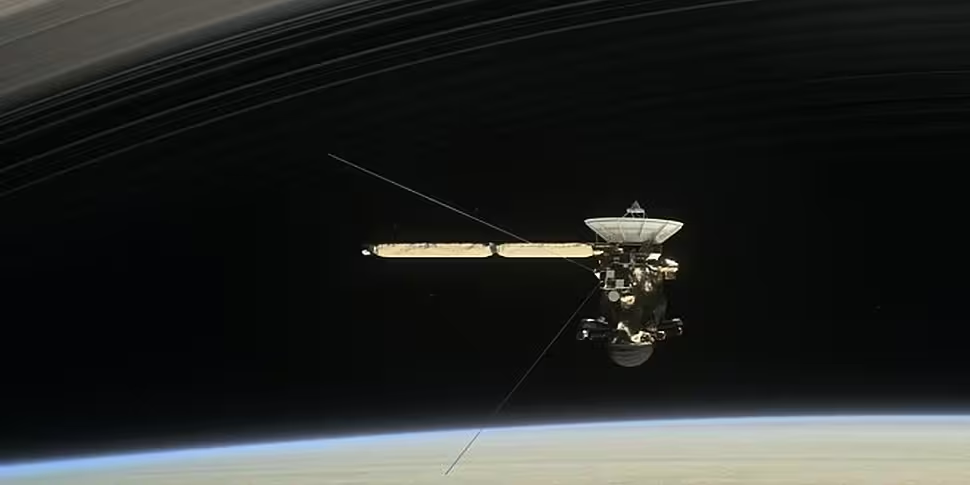The Cassini space probe has completed its 20-year mission with a fiery crash into the hostile atmosphere of Saturn.
It was a fittingly spectacular end to what is widely regarded as one of mankind's most important forays into space.
The spacecraft has travelled approximately 8 billion kilometres since it launched from Cape Canaveral, Florida in 1997.
The mission, a collaboration between NASA, the European Space Agency (ESA) and the Italian Space Agency (ASI), has delivered some of the most astonishing findings known to astronomy since it began transmitting data 13 years ago.
Aiming to study Saturn and its famous rings and moons, the €2.7bn mission delivered priceless data shedding light on the formation of Saturn's rings, as well as the first-ever images from the surface of the massive moon Titan and the first evidence that conditions for extra-terrestrial life may exist within our solar system.

NASA/JPL-Caltech/Space Science Institute
The search for extra-terrestrial life
It was that final discovery that led to the probe's fiery swansong this morning.
The probe's close-up examination of giant plumes of water vapour bursting from the southern pole of the moon Enceladus led scientists to believe that there is an ocean of tidally-heated water beneath the moon's icy surface - making it a prime target in the search for extra-terrestrial life.
The mission's examination of Titan meanwhile, uncovered the existence of liquid methane seas as well as indications of prebiotic chemistry.

The surface of Titan. Image: ESA/NASA/Univ. of Arizona
Scientists were concerned that should they lose control of the probe - which was nearly out of fuel - it could crash land on one of Saturn's moons, potentially contaminating any microbial life that may be present.
It was decided that the best way to avoid any contamination was to shoot the probe directly into the gas giant's heavy atmosphere - where it would be torn apart at speeds of 120,000kph.
Grand finale
Cassini Programme Manager, Earl Maize said the probe would spend its final moments experiencing "a place no spacecraft has ever gone."
"We are going to be going 70,000mph," he said. "By the way we are going to be doing it from a billion kilometres away - it is all going to be done from right here."
"Even a piece of sand at that velocity will take out one of our instruments - or if it is in the wrong place could take out the spacecraft."
The spacecraft's explosive end was about more than simply alien health and safety however - with Cassini project scientist Dr Linda Spilker excited about what can be learned from the probes final transmissions.
"In so many ways, the grand finale is like a brand new mission," she said.
"In fact I would not be a bit surprised if some of the discoveries we make with Cassini might be the very best of the mission."

The spinning vortex of Saturn's North polar storm. Image: NASA/JPL/Space Science Institute
Final moments
The spacecraft's grand finale began at around 11:30am Irish time with the final pieces of data landing on earth 83 minutes later.
"Things never will be quite the same for those of us on the Cassini team now that the spacecraft is no longer flying," said Dr Spilker. "But, we take comfort knowing that every time we look up at Saturn in the night sky, part of Cassini will be there, too."
The heat and high pressure of the orbital entry will have ensured that any trace of the probe will have melted and been dispersed throughout Saturn's hostile atmosphere.









